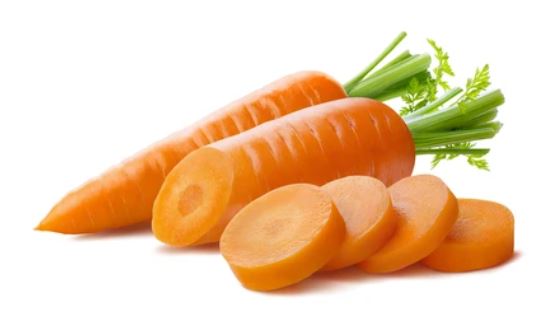
Table of Contents
Carrot is an edible root packed with vitamins, minerals, and antioxidants. The carrot originated in Central Asia, the leaves and seeds were mainly consumed, since the root had a woody texture. After many years of domestication, the edible varieties that we have today were reached. Learn how to grow carrots at home, their care, benefits and some recipes.
Do you want to learn how to grow more than 25 organic vegetables at home, in a didactic and entertaining way? For this purpose, check the germination rate of the place of the garden for the growth of carrots and vegetables.
Varieties of carrots
The carrot is a root that is commonly known as orange, with a delicious and delicate sweet flavour. We can find it in any market, store or flea market. But there is a great infinity of colours and shapes in carrots, we can find them in white, yellow, reddish or purple.
Sowing and care
This vegetable is winter, prefers cold or cool climates to develop properly. Sow between September and October. It requires a soil rich in organic matter, loose, with good drainage and full sun. It can be sown in cultivation beds or in boxes, containers or crates with a minimum depth of 30cm. If the soil compacts easily, it can affect the growth of our plants. Carrots are one of the vegetables that are produced with direct sowing. The seeds are elongated and very small, approximately 2mm long and their colour is light brown. Make furrows 1cm deep and 8-10cm between rows.
They can be done in double or triple rows to take advantage of space. Place the carrot seeds leaving 5cm between them. The seedlings will begin to sprout 15-20 days after sowing. The cotyledons will be thin and elongated leaves. When the second pair of leaves appear, we must place soil, a mixture prepared with compost or just compost, up to the base of the first pair of leaves.
Care and advice for carrots
Weeding to avoid pests and diseases. Remove old, yellow leaves from plants. Loosen the soil a little if a scab forms, be careful not to injure the plants. It resists temperatures down to -5 ° C and covers our plants with grovelling if the temperature is below zero. Carrots can be combined with lettuce, cabbage, peas, onion, leek and tomato. Avoid planting carrots where there were plants of the Pinaceae family (dill, celery, coriander, fennel, parsley, etc.) thus avoiding pests and diseases.
To clear the carrots from weeds, one must know the difference between weeds and growing carrots as the growing weeds are similar to the carrots. Our guide, what do carrot sprouts look like? can assist you in this situation to resolve the confusion between the weeds and the carrots.
Harvest and storage
Carrots take between 3 and 4 months to fully develop, we can check their growth by looking at the base of the plants. For its harvest, we must pull the leaves without separating them from the root or dig with a hand shovel if the soil is compacted. Cut the leaves to prevent the carrots from losing their moisture, rinse and allow them to dry. They can be stored in the refrigerator or a cold basement. Many varieties can be stored for several months, another option is to pickle them, preserve them, dehydrate them or freeze them.
My carrot seeds
Carrots are biennial plants, so they produce seed in the second year. We must have at least 15 plants to get good genetics in our seeds. The seeds will form in clusters. They should be harvested when they are brown or brown in colour, then placed in a paper bag to finish drying. The seeds are cleaned and stored in an airtight jar, labelled with the name, variety and date. Finally, store the jar in a cool and dry place, where it can be stored for up to 3 years, after which its germination percentage will decrease.
Benefits of carrots
Carrots are known worldwide for their large number of carotenoids that are transformed into vitamin A and their contribution to vision. But there are more benefits in carrots, they are antioxidants, rich in potassium and phosphorus, have a high-water content (diuretic), strengthen nails and hair, among other characteristics.
















